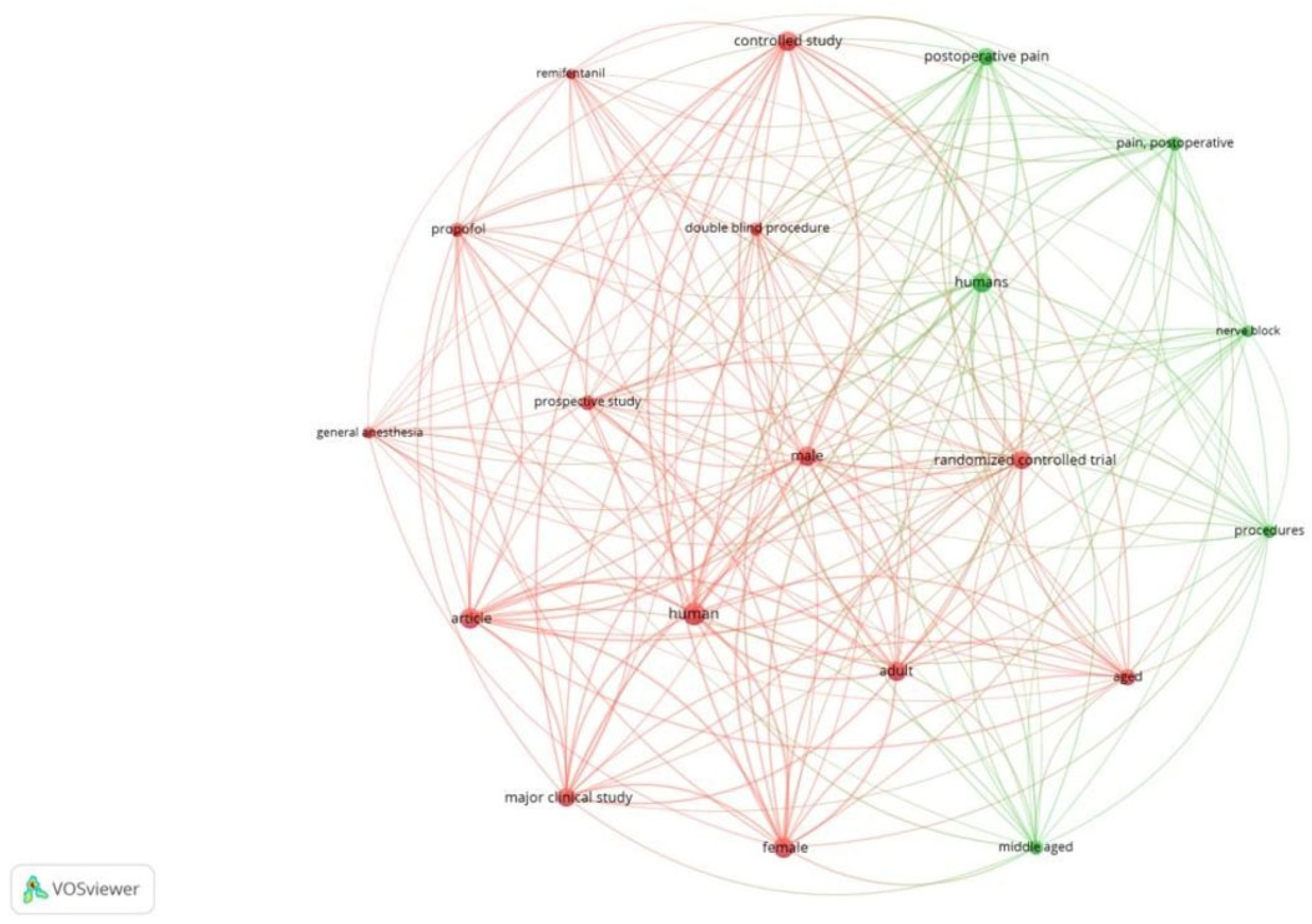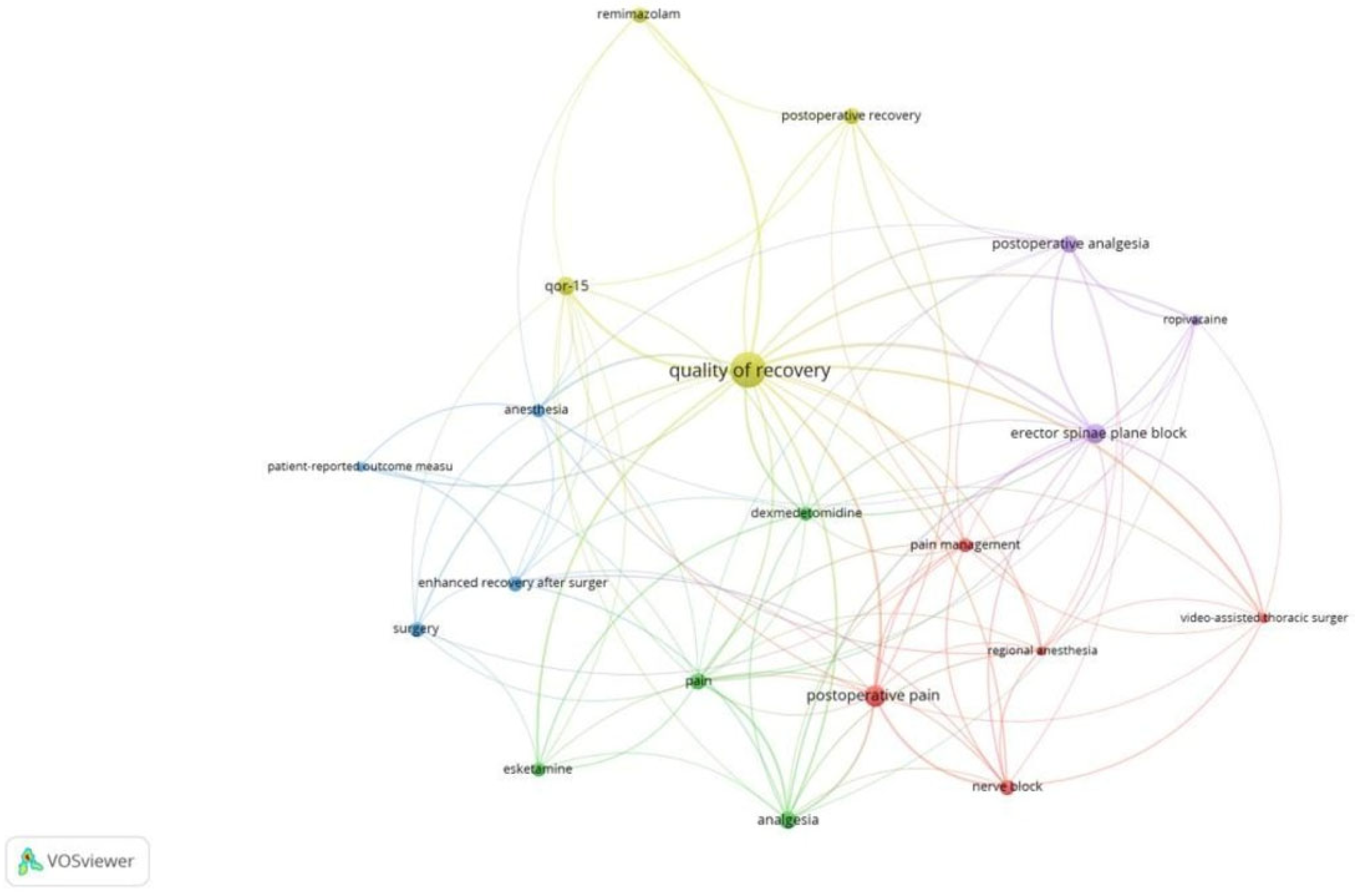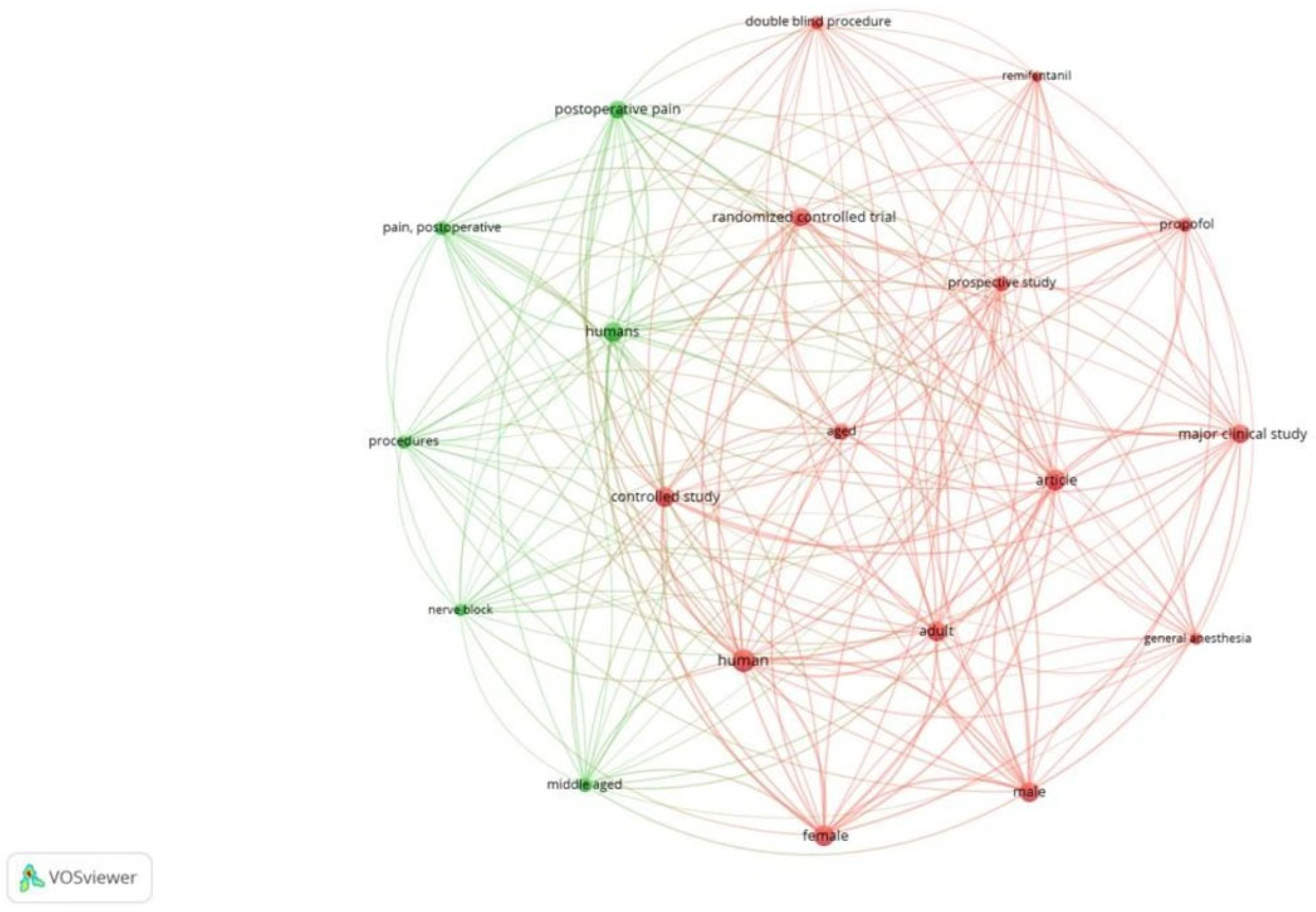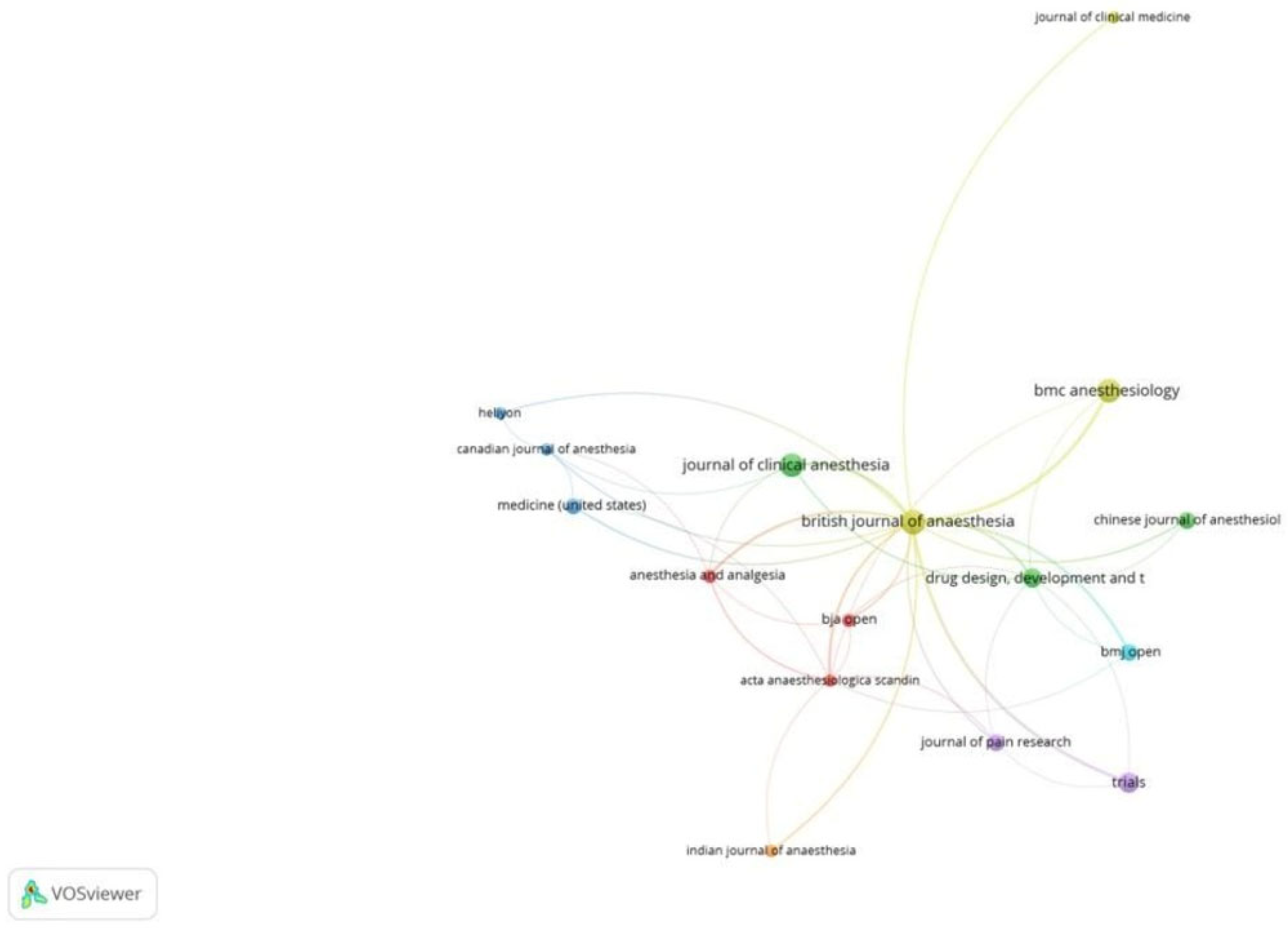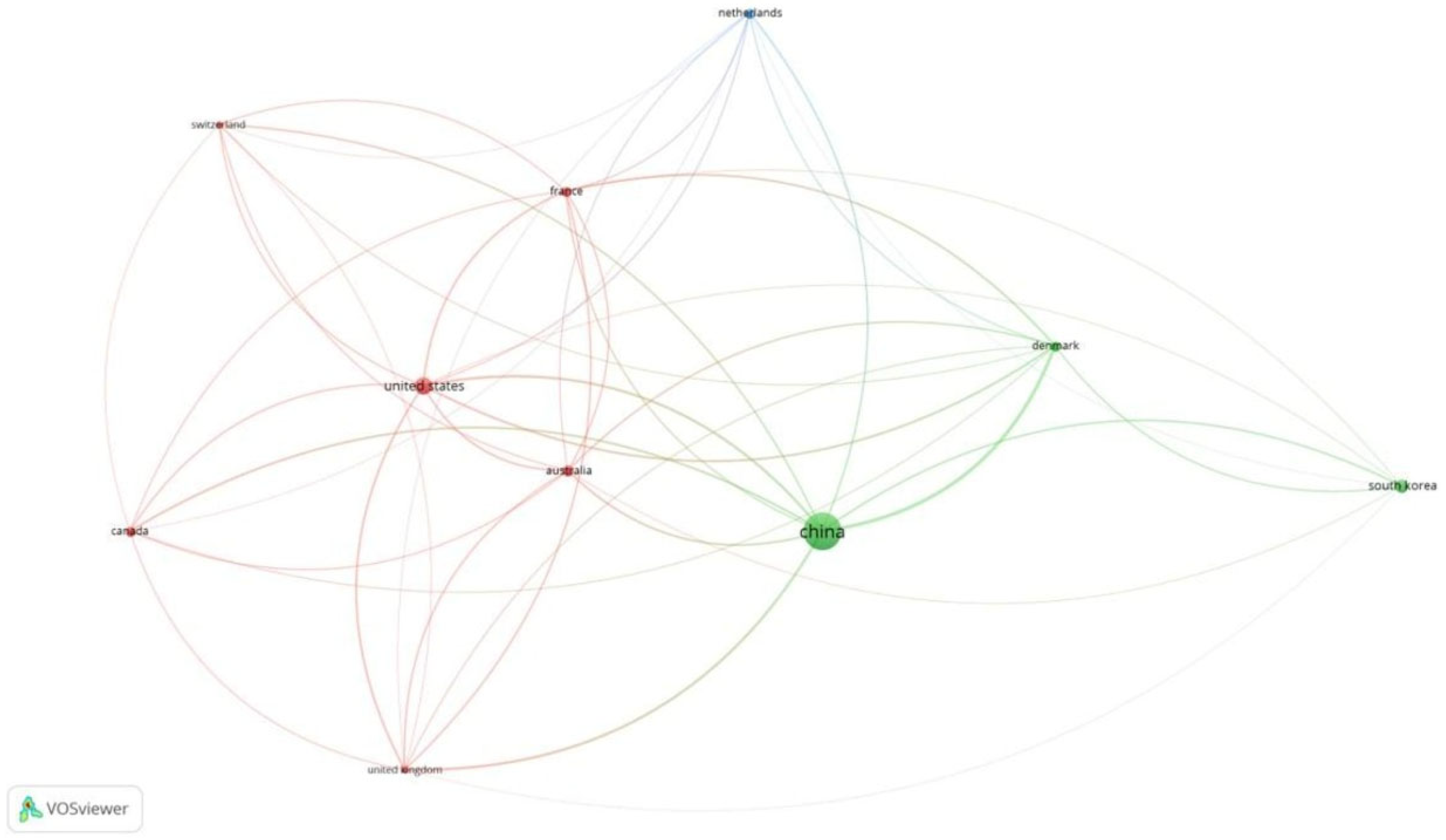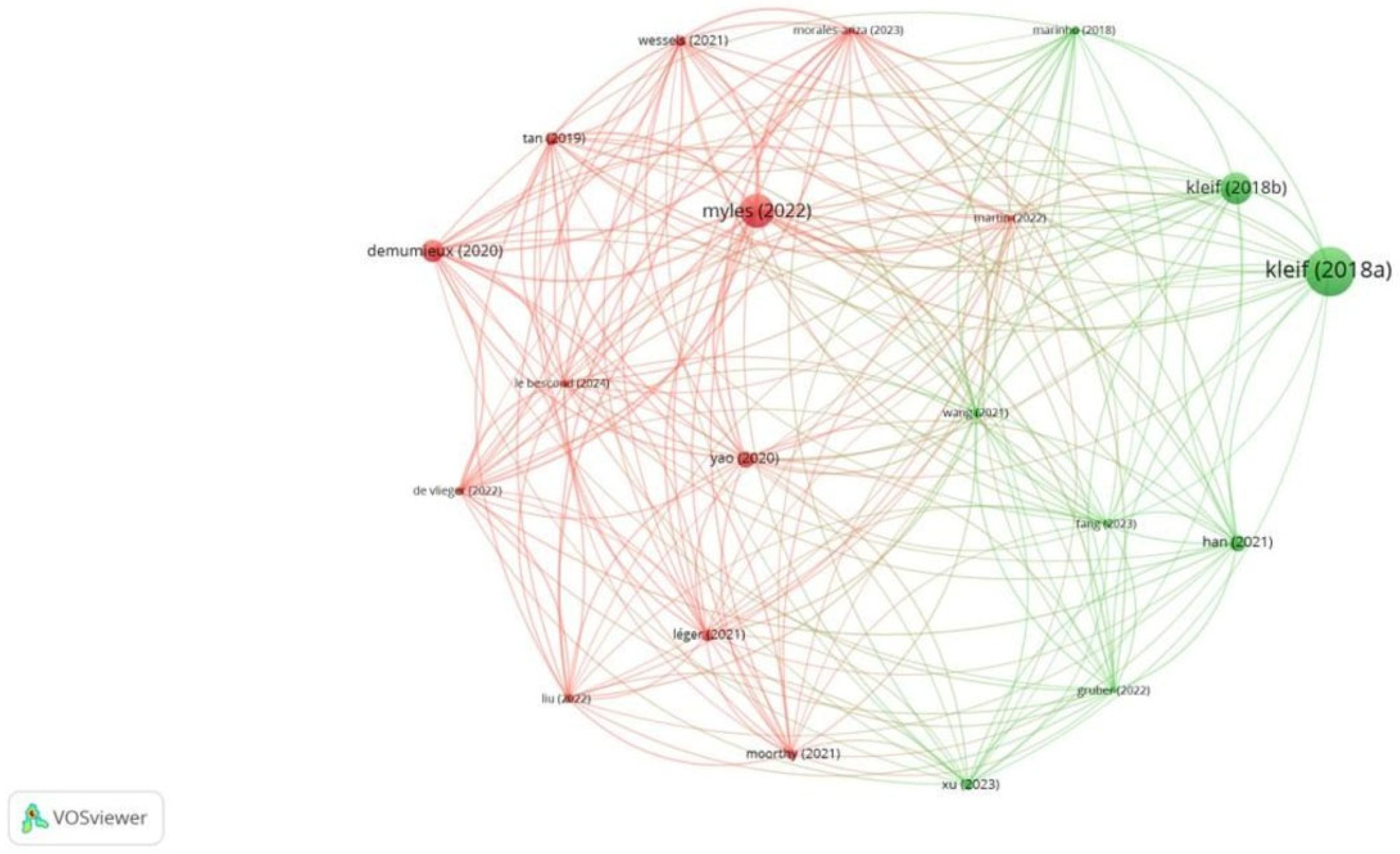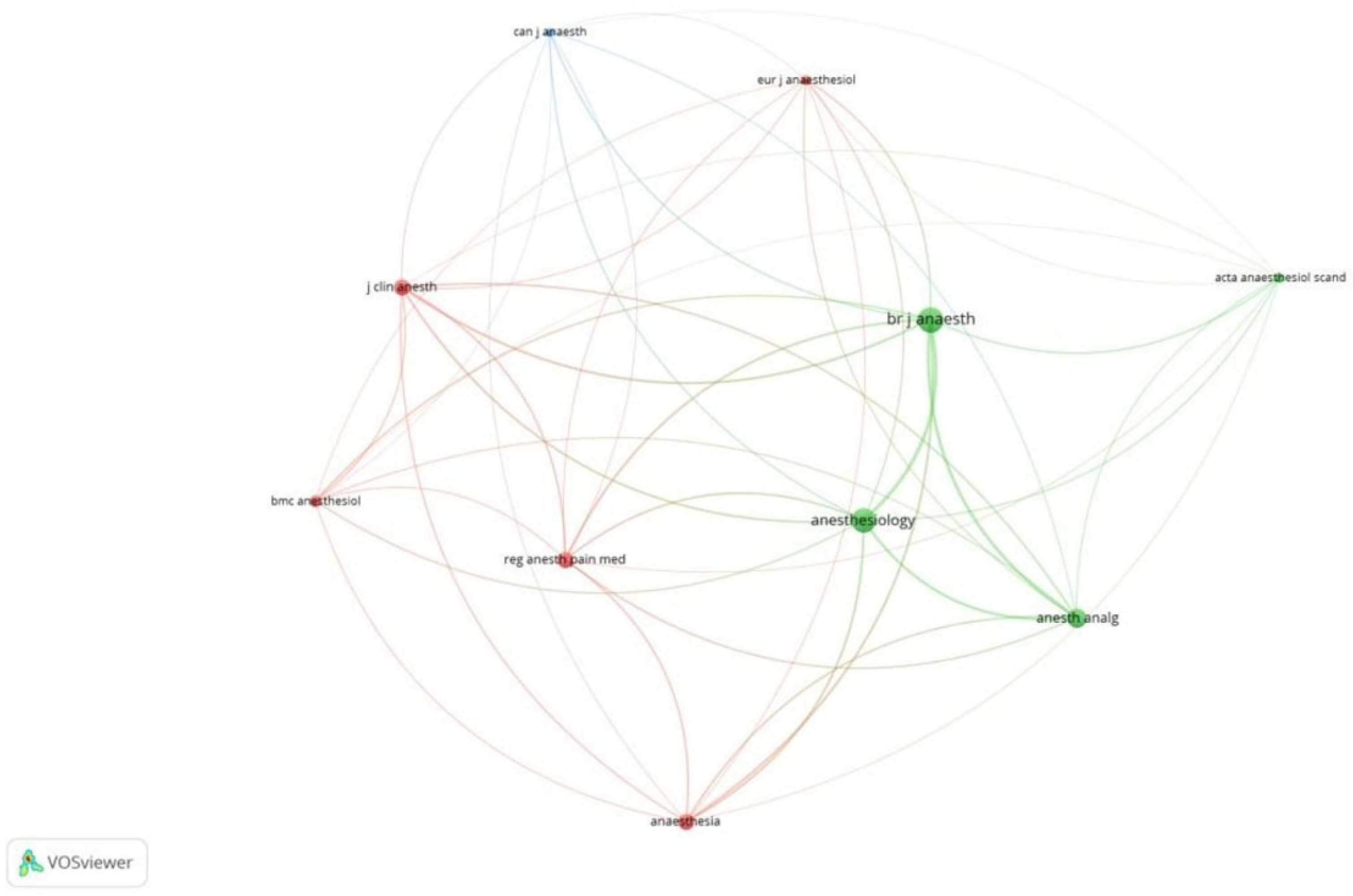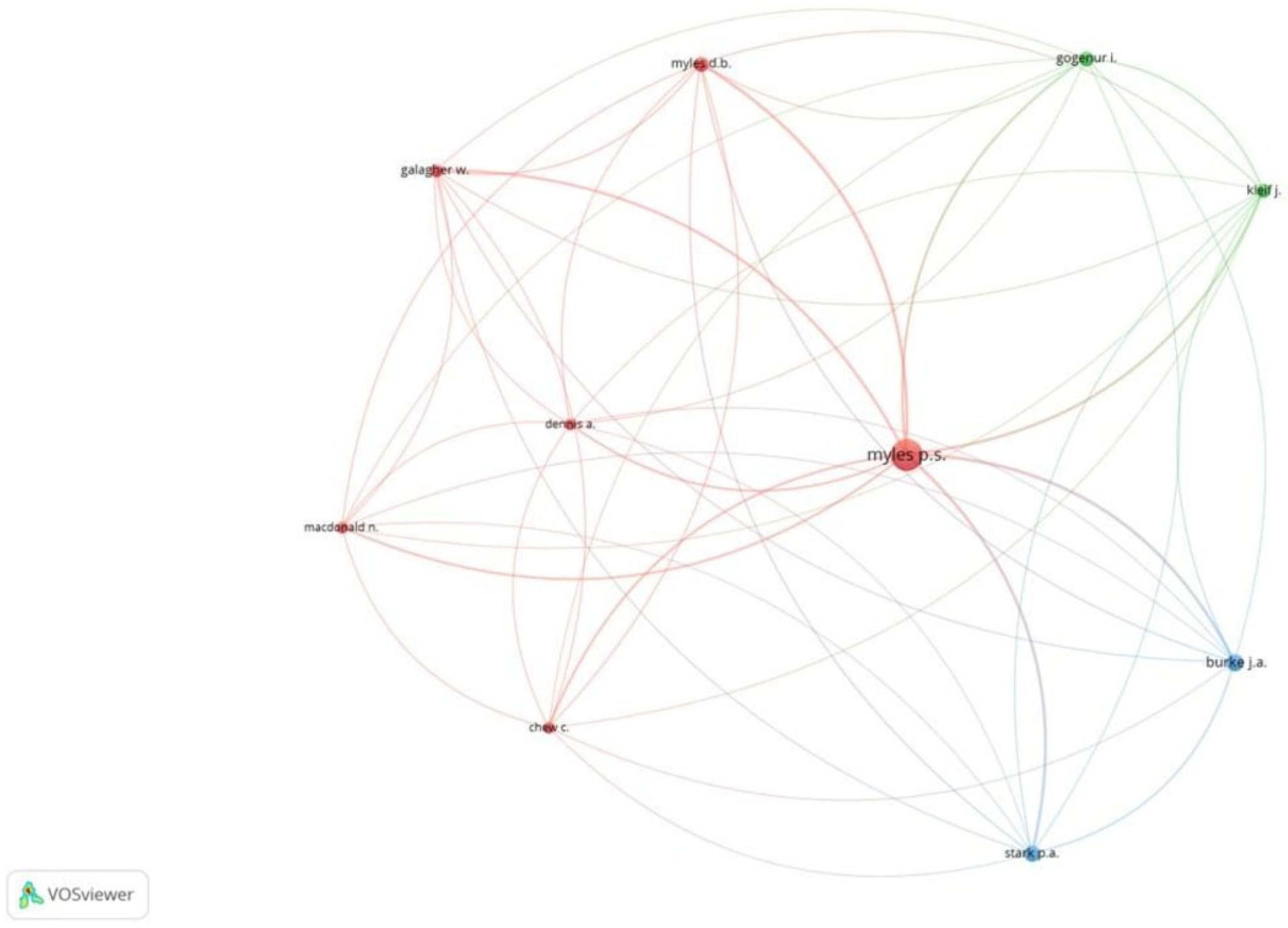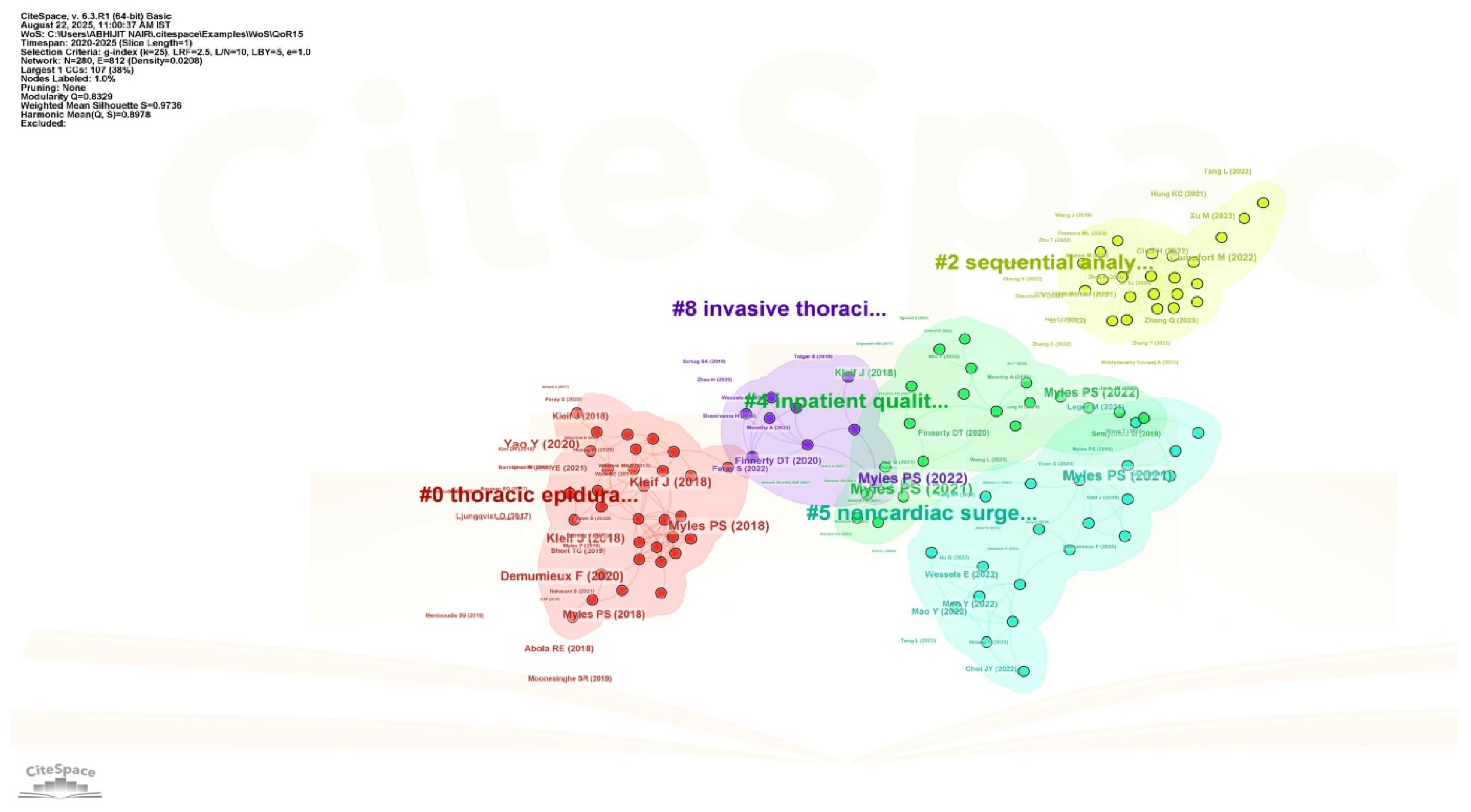1. Introduction
Physical comfort, emotional stability, and functional independence are the essential aspects of a decent postoperative recovery. Traditional endpoints, such as morbidity, mortality, and length of hospital stay, do not adequately represent the subjective experiences of patients during the early stages of recovery. Clinical decision-making and research priorities are determined by patient-reported outcome measures (PROMs), offering clear insight into the quality of recovery from the patient’s perspective [
1,
2]. In recent years, patient-reported outcome measures (PROMs) have become central to perioperative quality improvement initiatives. One of the first elaborate PROMs in perioperative care was the Quality of Recovery-40 (QoR-40) questionnaire, which combined five domains into a total of 40 items: emotional state, physical comfort, psychological support, physical independence, and pain. Although the QoR-40 demonstrated strong validity and reliability, routine use in busy clinical settings and large trials was hampered by its length [
3,
4,
5]. Generic and condition-specific tools such as the Short Form Health Survey (SF-36), EuroQOL 5 dimensions (EQ-5D, and Patient-Reported Outcomes Measurement Information System (PROMIS) instruments have complemented anesthesia-specific measures.
The Quality of Recovery-15 (QoR-15), a concise, one-page PROM created by choosing three representative items from each QoR-40 domain, was created by Stark et al. to mitigate these feasibility concerns [
6]. Based on the results of a systematic review and meta-analysis, Kleif et al. concluded that the QoR15 tool fulfills all the requirements for measuring quality of patient recovery in the perioperative period [
7]. To date, the QoR15 questionnaire has been successfully translated, culturally adapted, and validated in several languages worldwide, making it a globally applicable tool [
8,
9,
10,
11,
12,
13,
14,
15,
16].
Bibliometric analysis provides a quantitative approach to mapping such research landscapes, thereby identifying evidence gaps that traditional narrative reviews may overlook. Despite the widespread adoption of QoR-15, to our knowledge, no prior bibliometric assessment has examined QoR-15 scholarship; existing reviews have been narrative or systematic in approach. Therefore, the objective of this review is to perform a comprehensive bibliometric analysis using validated tools to explore research hotspots, collaboration patterns, and citation networks related to the QoR-15 tool in perioperative care.
2. Materials and Methods
A comprehensive search of the Scopus database was executed on 10 July 2025. All records included were formally published by that date. The search strategy used was as follows: TITLE-ABS-KEY (“QoR-15” OR “QoR15” OR “quality of recovery-15” OR “quality of recovery 15”) AND TITLE-ABS-KEY (postoperative) AND PUBYEAR > 2012 AND PUBYEAR < 2026 AND (LIMIT-TO (LANGUAGE, ‘English’)). We restricted the term ‘postoperative’ after pilot searches, including ‘perioperative’ and ‘anesthesia’, produced large volumes of irrelevant results. Nevertheless, most included papers addressed the full perioperative continuum. Studies reporting on QoR-15 were defined as any document that administered the QoR-15 instrument either as a validation or translation study, used QoR-15 as an outcome measure in interventional or observational trials, or discussed QoR-15 substantively (systematic or narrative reviews mentioning or investigating QoR-15 used for the perioperative period). Duplicate records were removed in Scopus before export. The Scopus file was stored in comma-separated values (CSV) format. Two reviewers (ASN and JDW) independently screened all titles and abstracts; disagreements were resolved by consensus. Studies were eligible if QoR-15 was applied, validated, translated, or used as an outcome measure; mere mention without application led to exclusion. The final articles were processed for bibliometric analysis.
We used the VOS viewer (Version 1.6.20, Leiden University, The Netherlands) to perform bibliometric analysis across five categories: co-authorship, co-occurrence, citation, bibliographic coupling, and co-citation analysis. Countries, organizations, and authors were used as the units of analysis for the co-authorship analysis. The index, author, and all keywords were used as the units of analysis for co-occurrence. The units of analysis for citation and bibliographic coupling were documents, sources, authors, organizations, and nations. Citations for authors, sources, and references were the units of analysis for co-citation. Additionally, we used CiteSpace (version 6.3) to visualize and analyze temporal trends, keyword clusters, and research impact in the literature.
Data Preparation and Analytical Parameters
Thresholds for inclusion were as follows: a minimum of 2 documents for authors and organisations, 5 occurrences for keywords, and 10 citations for cited references.
3. Results
The initial search of the Scopus database resulted in a total of 366 records. After screening all the titles and subsequent details, we excluded 25 titles that did not fulfil the inclusion criteria. Thus, a total of 341 titles fulfilled the criteria for bibliometric analysis. A PRISMA-style flow diagram is presented in
Supplementary Figure S1. The CSV file was then uploaded to the VOS viewer software for bibliometric analysis in various categories. In the figures, node size represents citation frequency, colour represents publication year, and line thickness represents link strength. For CiteSpace analysis, the CSV file was converted into a Web of Science-compatible format using a conversion tool to facilitate the analysis of bibliographic records.
3.1. Bibliometric Analysis Using VOS Viewer Software
3.1.1. Co-Authorship Analysis
Analyzing co-authorship provides insights into collaborative dynamics among authors, universities, and countries, and also helps in diagnosing the patterns and connections between authors. Out of 1901 authors, 7 met the threshold (minimum two co-authored publications). Paul S. Miles had 7 documents with 1151 citations. Co-authorship between authors is summarized in
Table 1A. Of the 999 organizations, 10 met the threshold. However, only three organizations were connected. The Department of Anesthesiology in Geneva, Switzerland, had 3 documents and 222 citations throughout. Co-authorship between organizations is summarized in
Table 1B. Among 43 countries, 18 met the threshold. We created a network encompassing 18 countries and the top 10 countries. Although China contributed the highest volume of publications (n = 164), Australia produced fewer but higher-impact studies, reflected by the highest citations per article. Co-authorship between countries is summarized in
Table 1C. Average citation impact varied markedly: Australia ≈ 92.4 citations per paper (1479/16), whereas China ≈ 5.8 citations per paper (952/164), highlighting differences in methodological impact and international visibility [
17]). The relatively weak inter-institutional connectivity may reflect region-specific collaboration patterns and limited international joint funding.
3.1.2. Co-Occurrence Analysis
Co-occurrence analysis examines the potential relationships between two bibliographic items that appear together, such as keywords or terms. This analysis facilitates mapping research topics and identifying thematic clusters, as well as understanding trends and research focus areas within a field. Out of 2555 keywords used, 462 met the threshold (≥5 occurrences). We created a network of 20 top keywords, as depicted in
Figure 1. Of the 722 author keywords, 53 met the threshold. The network of 53 author keywords is depicted in
Figure 2. We also generated a network using the top 20 author keywords. The most frequently used author keyword was ‘quality of recovery’ with an occurrence of 83 and a link strength of 97. Of the 2123 index keywords, 432 met the threshold.
Figure 3 is a network created with 20 keywords. Clusters highlight thematic focus areas, including quality of recovery, enhanced recovery pathways, and regional anesthesia techniques.
3.1.3. Citation Analysis
Citation analysis measures the impact and influence of published scientific works by examining citation frequency and patterns, and also facilitates the identification of significant and influential works within a field. It is also used to assess the popularity of research work and its impact on authors, articles, and journals.
Of the 341 documents, 206 met the threshold. We created a network of the top 10 documents (
Table 2A). The document by Myles et al. in 2018 [
18] had the maximum citations of 219. Of the 155 sources, 16 met the threshold. We created a network with all 16 sources (
Figure 4). BJA had 18 documents and 964 citations for the documents. Of the 1901 authors, 7 met the threshold. We created a network with all 7 authors. The author, Paul S. Myles, had 1151 citations for 7 documents as an author (
Table 2B). The prominence of Myles et al. reflects both foundational validation work and consensus definitions, establishing QoR-15 as the perioperative PROM of choice. Of the 999 organizations, 10 met the threshold. In this category, the Department of Anesthesiology at Geneva University Hospitals, Geneva, Switzerland had 222 citations, which was the maximum, for 3 documents (
Table 2C). Of the 43 countries, 18 met the threshold. We created a network of the top 10 countries. China had 164 documents and 952 citations for the same (
Figure 5). Differences in citation impact may relate to methodological rigor, multicentre trial visibility, and English-language accessibility of high-impact journals.
3.1.4. Bibliographic Coupling
This analysis identifies similarity between documents according to common references cited by them. This is suggestive of a relationship between two different documents. The results of bibliographic analysis are important in identifying related research done historically and in related or recent documents. It also facilitates clustering documents or authors that feature similar references in their bibliography. Unlike co-citation, which reflects retrospective influence, bibliographic coupling identifies contemporary similarity based on shared references, highlighting emerging research fronts.
Out of 341 documents, 206 met the threshold. We created a network of 20 top documents. The document by Myles et al. [
19] had the maximum citations (87) [
Figure 6]. Out of 155 sources, 16 met the threshold. We created a network using all 16 sources. BJA had the maximum sources (18) and the highest citations (964) [
Figure 7]. Out of the 1901 authors, 7 met the threshold. PS Myles had the maximum documents (7), with 1151 citations (
Table 3A). Out of the 999 organizations, 10 met the threshold. We created a network with all 10 organizations (
Table 3B). Cleveland Clinic, Ohio, United States, had the maximum documents (5) with 209 citations. However, the Department of Anesthesiology, Geneva University Hospital, Switzerland had the maximum citations (222) for 3 documents. Out of the 43 countries, 18 met the threshold. We selected the top 10 countries to create a network (
Table 3C). China had 164 documents, which was the maximum, but had 952 citations. The maximum citations were from Australia, at 1479, for 16 documents.
3.1.5. Co-Citation Analysis
Co-citation analysis generates a relationship between documents based on how often they are cited together by other documents. This analysis helps in clustering documents, authors, or journals by thematic similarity.
Of the 9221 references, 17 met the threshold. We created a network of the top 10 references. The 2013 document by Stark PA had the maximum citations, at 84 (
Table 4A,
Figure 8). Of the 2515 sources, 68 met the threshold. We created a network using the top 10 sources. BJA had the maximum citation among all sources, at 716 (
Table 4B,
Figure 9). Of the 22,123 authors, 113 met the threshold. We created a network using the top 10 authors. The author, PS Miles, had 584 citations, which was the maximum (
Table 4C,
Figure 10).
3.2. Bibliometric Analysis Using CiteSpace Software
Figure 11, which is generated using CiteSpace software, depicts cluster analysis of the research using QoR15 as the keyword. The cluster labelled #0, i.e., thoracic epidural (red), is the largest and most densely connected cluster, suggesting that thoracic epidural anesthesia is an important link between QoR15 outcomes and postoperative care. The cluster labelled #2, i.e., sequential analysis (yellow), suggests a methodological advance, emphasizing the use of sequential analysis and contemporary statistical frameworks in studies related to QoR15 studies, in the form of review articles, systematic reviews, and meta-analysis. Authors Myles PS, Kleif J, and Finnerty DT are the influential authors based on the repeatedly identified central nodes, suggesting significant influence and multiple contributions that generate evidence of the extensive use of QoR15 in various settings. The prominence of Professor Paul S. Myles within the network reflects his foundational contributions, from developing the QoR-40 (2000) and QoR-15 (2013) scales to defining patient-comfort endpoints through the StEP-COMPAC initiative (2018) [
18]. These works collectively shaped psychometric standards and outcome reporting in perioperative medicine. Highly cited validation studies by Kleif et al. (2018) [
7] and Myles et al. (2022) [
19] further consolidated the tool’s methodological credibility. High modularity (Q = 0.829) and weighted mean silhouette (S = 0.9736) scores represent a well-established, structured research field with distinct clusters and high reliability in the bibliometric classification.
Various temporal trends, key authors, and research connectivity related to the QoR15 tool are depicted in
Figure 12, which is generated using the CiteSpace software. The largest cluster, labelled #0-erector spinae plane, suggests considerable research focus on regional anesthesia techniques and their role in enhancing postoperative recovery, as measured by QoR15. Other prominent clusters seen are #1-15-item quality and #2-subjective quality, indicating the use of the QoR15 tool for subjective patient-centered outcomes. The network links (edges) demonstrate high interconnectivity between clusters and major publications (for example, from subjective quality research to practical applications in nerve blocks or enhanced recovery after surgery), suggesting cross-referencing between publications and their interconnectivity. The authors Myles PS, Kleif J, Chazapis M, Finnerty DT are the most influential ones based on the multiple nodes, and also have several citations, suggesting their impact in strengthening the evidence. A modularity (Q) score of 0.829 and a silhouette (S) score of 0.974 indicate a well-structured and internally consistent network, suggesting distinct thematic clusters with minimal overlap [
23].
Emerging clusters such as ‘opioid-free anaesthesia’ and ‘erector spinae plane’ blocks parallel global trends toward multimodal, opioid-sparing strategies encouraged by ERAS guidelines [
24]. These approaches emphasise functional recovery and patient comfort, which are domains directly captured by the QoR-15.
4. Discussion
This bibliometric analysis of QoR-15-related literature since its inception in 2013 reveals that it has been psychometrically evaluated in various surgical populations across multiple countries and has been successfully utilized by translating and validating it in many global languages, thus attesting to its broad applicability.
This bibliometric analysis reveals three dominant clusters. First, cross-cultural translation and validation studies have demonstrated the utility of the QoR15 tool irrespective of the language and the country. This reflects the global generalizability and psychometric robustness of this tool. Second, methodological syntheses and the literature review have been successful in demonstrating that QoR-15 is a valid, reliable, and clinically acceptable tool and reflects postoperative recovery satisfactorily. Third, the literature and keyword search have successfully established QoR-15 as a global postoperative recovery monitoring and improvement tool [
25]. The discrepancy between China’s high output and lower citation impact may reflect language barriers and regional citation patterns, whereas Australia’s smaller but highly cited output suggests leadership in methodological rigor and global influence.
Patient-centered outcomes in perioperative care are of utmost importance, and with the availability of a simple QoR15 tool, research interest in this essential aspect has gained momentum. A systematic review and meta-analysis of 26 studies and 22,847 patients across 16 countries, involving 15 different languages, demonstrated excellent discriminant validity and reliability, and good convergent validity [
19]. The authors concluded the QoR15 tool as a valid, reliable, and patient-centred metric that is appropriate for use in surgical patients.
Recent research has demonstrated its importance in patients undergoing emergency surgeries, which was otherwise not explored adequately previously, considering the time constraints and already existing patient perceptions about an emergency intervention [
26]. The QoR15 tool has also been successfully used in the pediatric surgical population using a pictorial adaptation of the tool [
27]. Future work can establish efficacy across frailty sub-groups.
The significance of the various studies published describing QoR15 differs based on the type of article (translation or validation studies vs. interventional or studies involving synthesis of results of various studies) and also based on the surgical category (elective vs. emergency or inpatient vs. ambulatory). Future research should explore digital platforms for QoR-15 administration, establishing the efficacy of the QoR-15 tool across various subpopulations, like patients with documented frailty, and various onco-surgeries. Development of normative datasets across age, sex, and surgical categories, and establishment of clinically meaningful score thresholds, will further enhance interpretability. Studies could integrate QoR-15 with longer-term PROMs and standardize the timing of assessment of the scores to optimize generalizability and comparability. In addition, QoR-15’s emphasis on pain, comfort, and independence aligns with growing emphasis on patient-centered pain outcomes, suggesting potential wider adoption in chronic and acute pain research.
The visualization using CiteSpace highlights the evolution of QoR15 as a robust tool facilitating postoperative outcome research, demonstrating the use of QoR15 in various setups, with evidence in the form of research and review articles, thus providing a platform for extensive research in the field of perioperative care in the future.
There are multiple limitations to this bibliometric analysis. Only the Scopus database was analysed owing to software limitations. Although Scopus offers broad coverage, it tends to over-represent English-language and high-impact journals, potentially under-capturing regional or non-indexed literature [
17]. Inclusion of Web of Science, PubMed, Lens, or Dimensions databases may have broadened coverage. Future bibliometric analyses should triangulate multiple databases. Unfortunately, the software only allows analysis using a single database at a time. If we analyze using records gathered from several databases, the number of figures and tables will increase. Therefore, some articles might have been omitted in the analysis. Those published after the date of our data collection must have been excluded because new articles were constantly being added to the literature. The exclusion of non-English and grey literature may bias findings toward English-speaking and indexed journals.
While the QoR-15 demonstrates broad validity and feasibility, certain limitations warrant attention. Ceiling effects may occur in ambulatory populations with excellent recovery; conversely, frail or oncologic patients may require complementary measures such as QoR-40 or SF-36 to capture nuanced recovery trajectories. Despite widespread clinical use, integration into health-policy instruments such as national quality audits or ERAS dashboards remains limited. Explicit linkage of QoR-15 scoring to discharge planning and quality-improvement initiatives could enhance its translational value.
5. Conclusions
This bibliometric and scientometric analysis provides a comprehensive overview of the global research landscape surrounding the QoR-15 tool. QoR-15 has evolved from validation studies to a globally adopted, psychometrically robust endpoint. Bibliometric trends highlight increasing focus on regional anesthesia, opioid-sparing strategies, and frailty research, underscoring its future role in perioperative pain and recovery science. Future research should focus on establishing standardized postoperative time points for QoR-15 administration, longitudinal use of QoR-15 beyond the immediate postoperative period, and expanding its use in underrepresented populations, such as frail, oncologic, or low-literacy patients.
Author Contributions
Conceptualization, A.S.N., C.J.d.W. and S.C.; methodology, A.S.N. and C.J.d.W.; software, A.S.N.; validation, S.C. and S.N.; formal analysis, A.S.N. and C.J.d.W.; data curation, A.S.N. and S.N.; writing—original draft preparation, A.S.N.; writing—review and editing, C.J.d.W., S.C. and S.N.; visualization, S.N.; supervision, S.C. and S.N.; project administration, A.S.N.; funding acquisition, not applicable. All authors have read and agreed to the published version of the manuscript.
Funding
This research received no external funding.
Institutional Review Board Statement
Not applicable.
Informed Consent Statement
Not applicable.
Data Availability Statement
No new data were created or analyzed in this study.
Acknowledgments
During the preparation of this manuscript/study, the authors used [VOS viewer, version 1.6.20, and CiteSpace, version 6.3] for the purposes of generating network diagrams and tables. The authors have reviewed and edited the output and take full responsibility for the content of this publication.
Conflicts of Interest
The authors declare no conflicts of interest.
References
- Churruca, K.; Pomare, C.; Ellis, L.A.; Long, J.C.; Henderson, S.B.; Murphy, L.E.D.; Leahy, C.J.; Braithwaite, J. Patient-reported outcome measures (PROMs): A review of generic and condition-specific measures and a discussion of trends and issues. Health Expect. 2021, 24, 1015–1024. [Google Scholar] [CrossRef] [PubMed]
- Bonsel, J.M.; Itiola, A.J.; Huberts, A.S.; Bonsel, G.J.; Penton, H. The use of patient-reported outcome measures to improve patient-related outcomes—A systematic review. Health Qual. Life Outcomes 2024, 22, 101. [Google Scholar] [CrossRef] [PubMed]
- Myles, P.S.; Weitkamp, B.; Jones, K.; Melick, J.; Hensen, S. Validity and reliability of a postoperative quality of recovery score: The QoR-40. Br. J. Anaesth. 2000, 84, 11–15. [Google Scholar] [CrossRef] [PubMed]
- Gornall, B.F.; Myles, P.S.; Smith, C.L.; Burke, J.; Leslie, K.; Pereira, M.; Bost, J.; Kluivers, K.; Nilsson, U.; Tanaka, Y.; et al. Measurement of quality of recovery using the QoR-40: A quantitative systematic review. Br. J. Anaesth. 2013, 111, 161–169. [Google Scholar] [CrossRef]
- Shida, D.; Wakamatsu, K.; Tanaka, Y.; Yoshimura, A.; Kawaguchi, M.; Miyamoto, S.; Tagawa, K. The postoperative patient-reported quality of recovery in colorectal cancer patients under enhanced recovery after surgery using QoR-40. BMC Cancer 2015, 15, 799. [Google Scholar] [CrossRef]
- Stark, P.A.; Myles, P.S.; Burke, J.A. Development and psychometric evaluation of a postoperative quality of recovery score: The QoR-15. Anesthesiology 2013, 118, 1332–1340. [Google Scholar] [CrossRef]
- Kleif, J.; Waage, J.; Christensen, K.B.; Gögenur, I. Systematic review of the QoR-15 score, a patient- reported outcome measure measuring quality of recovery after surgery and anaesthesia. Br. J. Anaesth. 2018, 120, 28–36. [Google Scholar] [CrossRef]
- Rosato, R.; Palazzo, V.; Borghi, F.; Camanni, M.; Puppo, A.; Delpiano, E.M.; Pellegrino, L.; Piovano, E.; Rizzo, A.; Rolfo, M.; et al. Factor structure of post-operative quality of recovery questionnaire (QoR-15): An Italian adaptation and validation. Front. Psychol. 2023, 13, 1096579. [Google Scholar] [CrossRef]
- Kleif, J.; Edwards, H.M.; Sort, R.; Vilandt, J.; Gögenur, I. Translation and validation of the Danish version of the postoperative quality of recovery score QoR-15. Acta Anaesthesiol. Scand. 2015, 59, 912–920. [Google Scholar] [CrossRef]
- Bu, X.S.; Zhang, J.; Zuo, Y.X. Validation of the Chinese Version of the Quality of Recovery-15 Score and Its Comparison with the Post-Operative Quality Recovery Scale. Patient 2016, 9, 251–259. [Google Scholar] [CrossRef]
- Sá, A.C.; Sousa, G.; Santos, A.; Santos, C.; Abelha, F.J. Quality of Recovery after Anesthesia: Validation of the Portuguese Version of the ‘Quality of Recovery 15’ Questionnaire. Acta Med. Port. 2015, 28, 567–574. [Google Scholar] [CrossRef] [PubMed]
- Kara, U.; Şimşek, F.; Kamburoğlu, H.; Özhan, M.Ö.; Alakuş, Ü.; İnce, M.E.; Eksert, S.; Özkan, G.; Eşkin, M.B.; Şenkal, S. Linguistic validation of a widely used recovery score: Quality of recovery-15 (QoR-15). Turk. J. Med. Sci. 2022, 52, 427–435. [Google Scholar] [CrossRef] [PubMed]
- Lyckner, S.; Böregård, I.L.; Zetterlund, E.L.; Chew, M.S. Validation of the Swedish version of Quality of Recovery score -15: A multicentre, cohort study. Acta Anaesthesiol. Scand. 2018, 62, 893–902. [Google Scholar] [CrossRef] [PubMed]
- Lee, J.H.; Ki, M.; Choi, S.; Woo, C.J.; Kim, D.; Lim, H.; Kim, D.-C. Validity and reliability of the Korean version of the Quality of Recovery-15 questionnaire. Korean J. Anesthesiol. 2021, 74, 142–149. [Google Scholar] [CrossRef]
- Nakatani, S.; Ida, M.; Tanaka, Y.; Okamoto, N.; Wang, X.; Nakatani, H.; Sato, M.; Naito, Y.; Kawaguchi, M. Translation and validation of the Japanese version of the quality of recovery-15 questionnaire. J. Anesth. 2021, 35, 426–433. [Google Scholar] [CrossRef]
- Demumieux, F.; Ludes, P.O.; Diemunsch, P.; Bennett-Guerrero, E.; Lujic, M.; Lefebvre, F.; Noll, E. Validation of the translated Quality of Recovery-15 questionnaire in a French-speaking population. Br. J. Anaesth. 2020, 124, 761–767. [Google Scholar] [CrossRef]
- Mongeon, P.; Paul-Hus, A. The journal coverage of Web of Science and Scopus: A comparative analysis. Scientometrics 2016, 106, 213–228. [Google Scholar] [CrossRef]
- Myles, P.S.; Boney, O.; Botti, M.; Cyna, A.M.; Gan, T.J.; Jensen, M.P.; Kehlet, H.; Kurz, A.; De Oliveira, G.S., Jr.; Peyton, P.; et al. Systematic review and consensus definitions for the Standardised Endpoints in Perioperative Medicine (StEP) initiative: Patient comfort. Br. J. Anaesth. 2018, 120, 705–711. [Google Scholar] [CrossRef]
- Myles, P.S.; Shulman, M.A.; Reilly, J.; Kasza, J.; Romero, L. Measurement of quality of recovery after surgery using the 15-item quality of recovery scale: A systematic review and meta-analysis. Br. J. Anaesth. 2022, 128, 1029–1039. [Google Scholar] [CrossRef]
- Bowyer, A.; Jakobsson, J.; Ljungqvist, O.; Royse, C. A review of the scope and measurement of postoperative quality of recovery. Anaesthesia 2014, 69, 1266–1278. [Google Scholar] [CrossRef]
- Myles, P.S.; Myles, D.B. An Updated Minimal Clinically Important Difference for the QoR-15 Scale. Anesthesiology 2021, 135, 934–935. [Google Scholar] [CrossRef]
- Myles, P.S.; Myles, D.B.; Galagher, W.; Chew, C.; MacDonald, N.; Dennis, A. Minimal Clinically Important Difference for Three Quality of Recovery Scales. Anesthesiology 2016, 125, 39–45. [Google Scholar] [CrossRef]
- Chen, C. CiteSpace: A Practical Guide for Mapping Scientific Literature; Version 6.3 User Manual; Drexel University: Philadelphia, PA, USA, 2020. [Google Scholar]
- Wick, E.C.; Grant, M.C.; Wu, C.L. Postoperative Multimodal Analgesia Pain Management with Nonopioid Analgesics and Techniques: A Review. JAMA Surg. 2017, 152, 691–697. [Google Scholar] [CrossRef]
- Wessels, E.; Perrie, H.; Scribante, J.; Jooma, Z. Quality of recovery in the perioperative setting: A narrative review. J. Clin. Anesth. 2022, 78, 110685. [Google Scholar] [CrossRef]
- Le Bescond, V.; Petit-Phan, J.; Campfort, M.; Nicolleau, C.; Conté, M.; Bouhours, G.; Rony, L.; Lasocki, S.; Léger, M. Validation of the postoperative Quality of Recovery-15 questionnaire after emergency surgery and association with quality of life at three months. Can. J. Anaesth. 2024, 71, 590–599. [Google Scholar] [CrossRef]
- Noll, E.; De Angelis, V.; Bopp, C.; Chauvin, C.; Talon, I.; Bennett-Guerrero, E.; Lefebvre, F.; Pottecher, J. Pictorial adaptation of the quality of recovery 15 scale and psychometric validation into a pediatric surgical population. Sci. Rep. 2023, 13, 14085. [Google Scholar] [CrossRef]
Figure 1.
Co-occurrence and all keywords [Node size = citation frequency; color = publication year (warm = recent); line thickness = link strength].
Figure 1.
Co-occurrence and all keywords [Node size = citation frequency; color = publication year (warm = recent); line thickness = link strength].
Figure 2.
Co-occurrence and author keywords [Node size = citation frequency; color = publication year (warm = recent); line thickness = link strength].
Figure 2.
Co-occurrence and author keywords [Node size = citation frequency; color = publication year (warm = recent); line thickness = link strength].
Figure 3.
Co-occurrence and index keywords [Node size = citation frequency; color = publication year (warm = recent); line thickness = link strength].
Figure 3.
Co-occurrence and index keywords [Node size = citation frequency; color = publication year (warm = recent); line thickness = link strength].
Figure 4.
Citation analysis and sources [Node size = citation frequency; color = publication year (warm = recent); line thickness = link strength].
Figure 4.
Citation analysis and sources [Node size = citation frequency; color = publication year (warm = recent); line thickness = link strength].
Figure 5.
Citation analysis and countries [Node size = citation frequency; color = publication year (warm = recent); line thickness = link strength].
Figure 5.
Citation analysis and countries [Node size = citation frequency; color = publication year (warm = recent); line thickness = link strength].
Figure 6.
Bibliographic coupling and documents [Node size = citation frequency; color = publication year (warm = recent); line thickness = link strength].
Figure 6.
Bibliographic coupling and documents [Node size = citation frequency; color = publication year (warm = recent); line thickness = link strength].
Figure 7.
Bibliographic coupling and sources [Node size = citation frequency; color = publication year (warm = recent); line thickness = link strength].
Figure 7.
Bibliographic coupling and sources [Node size = citation frequency; color = publication year (warm = recent); line thickness = link strength].
Figure 8.
Co-citation analysis and references [Node size = citation frequency; color = publication year (warm = recent); line thickness = link strength].
Figure 8.
Co-citation analysis and references [Node size = citation frequency; color = publication year (warm = recent); line thickness = link strength].
Figure 9.
Co-citation analysis and sources [Node size = citation frequency; color = publication year (warm = recent); line thickness = link strength].
Figure 9.
Co-citation analysis and sources [Node size = citation frequency; color = publication year (warm = recent); line thickness = link strength].
Figure 10.
Co-citation analysis and authors [Node size = citation frequency; color = publication year (warm = recent); line thickness = link strength].
Figure 10.
Co-citation analysis and authors [Node size = citation frequency; color = publication year (warm = recent); line thickness = link strength].
Figure 11.
Cluster analysis of the research field centered on “QoR15” (Quality of Recovery-15) and “postoperative” outcomes [Node size = citation frequency; color = publication year (warm = recent); line thickness = link strength].
Figure 11.
Cluster analysis of the research field centered on “QoR15” (Quality of Recovery-15) and “postoperative” outcomes [Node size = citation frequency; color = publication year (warm = recent); line thickness = link strength].
Figure 12.
CiteSpace visualization summarizing temporal trends, key authors, research connectivity, and impact [Node size = citation frequency; color = publication year (warm = recent); line thickness = link strength].
Figure 12.
CiteSpace visualization summarizing temporal trends, key authors, research connectivity, and impact [Node size = citation frequency; color = publication year (warm = recent); line thickness = link strength].
Table 1.
Summary of co-authorship analysis (Threshold = minimum of 2 joint publications for authors or organisations; country networks include entities with ≥3 collaborative records).
Table 1.
Summary of co-authorship analysis (Threshold = minimum of 2 joint publications for authors or organisations; country networks include entities with ≥3 collaborative records).
| A: Co-Authorship and Authors |
|---|
| Author | Documents | Citations |
| Donal J Buggy | 6 | 215 |
| Ismail Gögenur | 6 | 102 |
| Mitsuru Ida | 5 | 12 |
| Masahiko Kawaguchi | 5 | 12 |
| Paul S Myles | 7 | 1151 |
| Ke Peng | 5 | 10 |
| Yusheng Yao | 5 | 100 |
| B: Co-authorship and organizations |
| Organization | Documents | Citations |
| Department of Anaesthesiology, Geneva University Hospitals, Geneva, Switzerland | 3 | 222 |
| Department of Anesthesiology and Pain Medicine, University of California Davis Health, Sacramento, United States | 3 | 10 |
| Department of Anesthesiology, Chi Mei Medical Center, Tainan City, Taiwan | 4 | 26 |
| Department of Anesthesiology, Pain and Perioperative Medicine, the First Affiliated Hospital of Zhengzhou University, Henan, Zhengzhou, China | 3 | 78 |
| Department of Anesthesiology, The Affiliated Hospital of Xuzhou Medical University, Xuzhou, China | 3 | 11 |
| Department of Anesthesiology, West China Hospital, Sichuan University, Chengdu, China | 3 | 26 |
| Department of Psychiatry, Kaohsiung Chang Gung Memorial Hospital and Chang Gung University College of Medicine, Kaohsiung City, Taiwan | 3 | 12 |
| Division of Anaesthesiology, Mater Misericordiae University Hospital, Dublin, Ireland | 3 | 196 |
| Outcomes Research, Cleveland Clinic, Cleveland, United States | 5 | 209 |
| School of Medicine, University College, Dublin, Ireland | 3 | 55 |
| C: Co-authorship and countries |
| Country | Documents | Citations |
| Australia | 16 | 1479 |
| Belgium | 6 | 208 |
| Canada | 12 | 328 |
| China | 164 | 952 |
| Denmark | 13 | 613 |
| Ireland | 10 | 259 |
| The Netherlands | 12 | 331 |
| Switzerland | 6 | 251 |
| United Kingdom | 7 | 376 |
| United States | 35 | 743 |
Table 2.
Summary of citation analysis.
Table 2.
Summary of citation analysis.
| A: Citation Analysis and Documents |
|---|
| Document | Year | Citations |
| Myles | 2022 | 87 |
| Tan | 2019 | 13 |
| Myles | 2018 | 219 |
| Bu | 2016 | 99 |
| Kleif | 2018a | 181 |
| Demumieux | 2020 | 37 |
| Kleif | 2018b | 73 |
| Kleif | 2015 | 73 |
| Yoon | 2020 | 42 |
| Chazapis | 2016 | 118 |
| B: Citation analysis and authors |
| Author | Documents | Citations |
| Donal J Buggy | 6 | 215 |
| Ismail Gögenur | 6 | 102 |
| Mitsuru Ida | 5 | 12 |
| Masahiko Kawaguchi | 5 | 12 |
| Paul S. Myles | 7 | 1151 |
| Ke Peng | 5 | 10 |
| Yusheng Yao | 5 | 100 |
| C: Citation and organization (same as bibliographic coupling) |
| Organization | Documents | Citations |
| Department of Anaesthesiology, Geneva University Hospitals, Geneva, Switzerland | 3 | 222 |
| Department of Anesthesiology and Pain Medicine, University of California, Davis Health, Sacramento, United States | 3 | 10 |
| Department of Anesthesiology, Chi Mei Medical Center, Tainan City, Taiwan | 4 | 26 |
| Department of Anesthesiology, Pain and Perioperative Medicine, The First Affiliated Hospital of Zhengzhou University, Henan, Zhengzhou, China | 3 | 78 |
| Department of Anesthesiology, the affiliated hospital of Xuzhou Medical University, Xuzhou, China | 3 | 11 |
| Department of Anesthesiology, West China Hospital, Sichuan University, Chengdu, China | 3 | 26 |
| Department of Psychiatry, Kaohsiung Chang Gung Memorial Hospital and Chang Gung University College of Medicine, Kaohsiung City, Taiwan | 3 | 12 |
| Division of Anaesthesiology, Mater Misericordiae University Hospital, Dublin, Ireland | 3 | 196 |
| Outcomes Research, Cleveland Clinic, Cleveland, United States | 5 | 209 |
| School of Medicine, University College, Dublin, Ireland | 3 | 55 |
Table 3.
Summary of bibliographic coupling.
Table 3.
Summary of bibliographic coupling.
| A: Bibliographic Coupling and Authors |
|---|
| Author | Documents | Citations |
| Donal J Buggy | 6 | 215 |
| Ismail Gögenur | 6 | 102 |
| Mitsuru Ida | 5 | 12 |
| Masahiko Kawaguchi | 5 | 12 |
| Paul S Myles | 7 | 1151 |
| Ke Peng | 5 | 10 |
| Yusheng Yao | 5 | 100 |
| B: Bibliographic coupling and organizations |
| Organization | Documents | Citations |
| Department of Anaesthesiology, Geneva University Hospitals, Geneva, Switzerland | 3 | 222 |
| Department of Anesthesiology and Pain Medicine, University of California, Davis Health, Sacramento, United States | 3 | 10 |
| Department of Anesthesiology, Chi Mei Medical Center, Tainan City, Taiwan | 4 | 26 |
| Department of Anesthesiology, Pain and Perioperative Medicine, The First Affiliated Hospital of Zhengzhou University, Henan, Zhengzhou, China | 3 | 78 |
| Department of Anesthesiology, the affiliated hospital of Xuzhou Medical University, Xuzhou, China | 3 | 11 |
| Department of Anesthesiology, West China Hospital, Sichuan University, Chengdu, China | 3 | 26 |
| Department of Psychiatry, Kaohsiung Chang Gung Memorial Hospital and Chang Gung University College of Medicine, Kaohsiung City, Taiwan | 3 | 12 |
| Division of Anaesthesiology, Mater Misericordiae University Hospital, Dublin, Ireland | 3 | 196 |
| Outcomes Research, Cleveland Clinic, Cleveland, United States | 5 | 209 |
| School of medicine, university college, Dublin, Ireland | 3 | 55 |
| C: Bibliographic coupling and countries |
| Country | Documents | Citations |
| Australia | 16 | 1479 |
| Canada | 12 | 328 |
| China | 164 | 952 |
| Denmark | 13 | 613 |
| France | 13 | 126 |
| Ireland | 10 | 259 |
| The Netherlands | 12 | 331 |
| South Korea | 22 | 289 |
| United Kingdom | 7 | 376 |
| United States | 35 | 743 |
Table 4.
Summary of co-citation analysis.
Table 4.
Summary of co-citation analysis.
| A: Co-Citation Analysis and Cited References |
|---|
| Cited reference | Citations |
| Bowyer A et al. (2014) [20] | 12 |
| Bu XS et al. (2016) [10] | 16 |
| Gornall BF et al. (2013) [4] | 15 |
| Kleif et al. (2015) [9] | 10 |
| Myles PS et al. (2018) [18] | 12 |
| Myles PS et al. (2021) [21] | 17 |
| Myles PS et al. (2016) [22] | 39 |
| Myles PS et al. (2022) [19] | 13 |
| Myles PS et al. (2000) [3] | 19 |
| Stark PA et al. (2013) [6] | 84 |
| B: Co-citation and sources |
| Source | Citations |
| Acta Anaesthesiologica Scandinavica | 102 |
| Anaesthesia | 273 |
| Anesthesia analgesia | 403 |
| Anesthesiology | 678 |
| BMC Anesthesiology | 153 |
| British Journal of Anaesthesia | 716 |
| Canadian Journal of Anaesthesiology | 88 |
| European Journal of Anaesthesiology | 109 |
| Journal of Clinical Anesthesia | 283 |
| Regional Anesthesia Pain Medicine | 275 |
| C: Co-citation and authors |
| Author | Citations |
| JA Burke | 167 |
| C Chew | 79 |
| A Dennis | 87 |
| W Galagher | 103 |
| I Gogenur | 138 |
| J Kleif | 122 |
| N Macdonald | 78 |
| DB Myles | 134 |
| PS Myles | 584 |
| PA Stark | 158 |
| Disclaimer/Publisher’s Note: The statements, opinions and data contained in all publications are solely those of the individual author(s) and contributor(s) and not of MDPI and/or the editor(s). MDPI and/or the editor(s) disclaim responsibility for any injury to people or property resulting from any ideas, methods, instructions or products referred to in the content. |
© 2025 by the authors. Licensee MDPI, Basel, Switzerland. This article is an open access article distributed under the terms and conditions of the Creative Commons Attribution (CC BY) license (https://creativecommons.org/licenses/by/4.0/).
